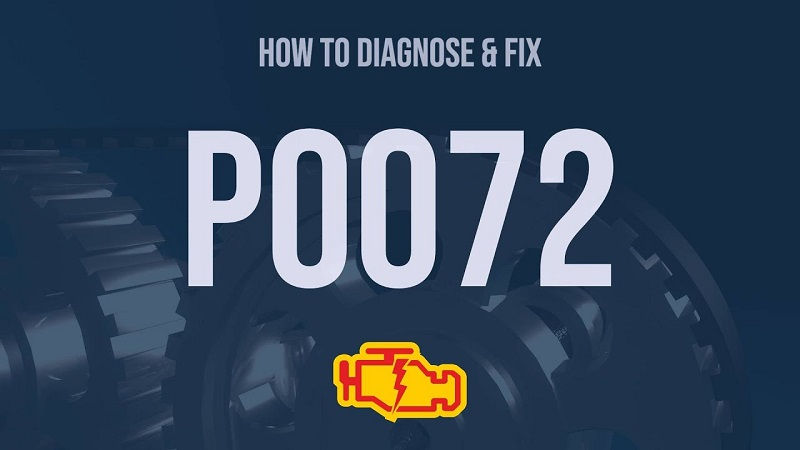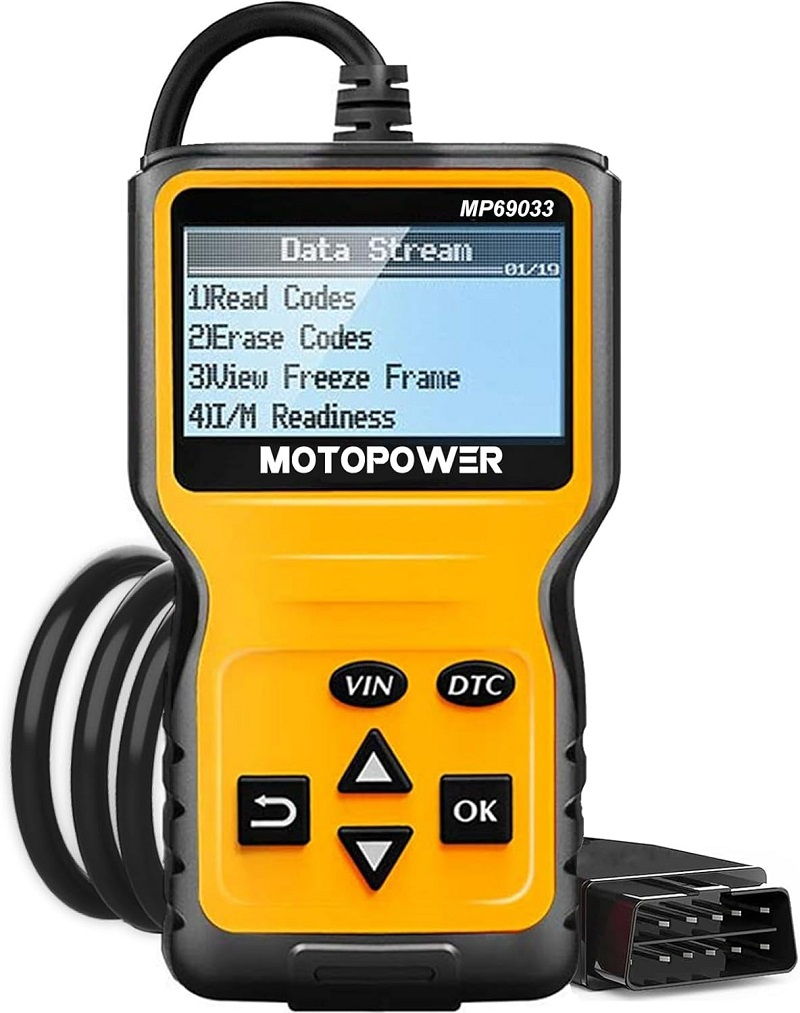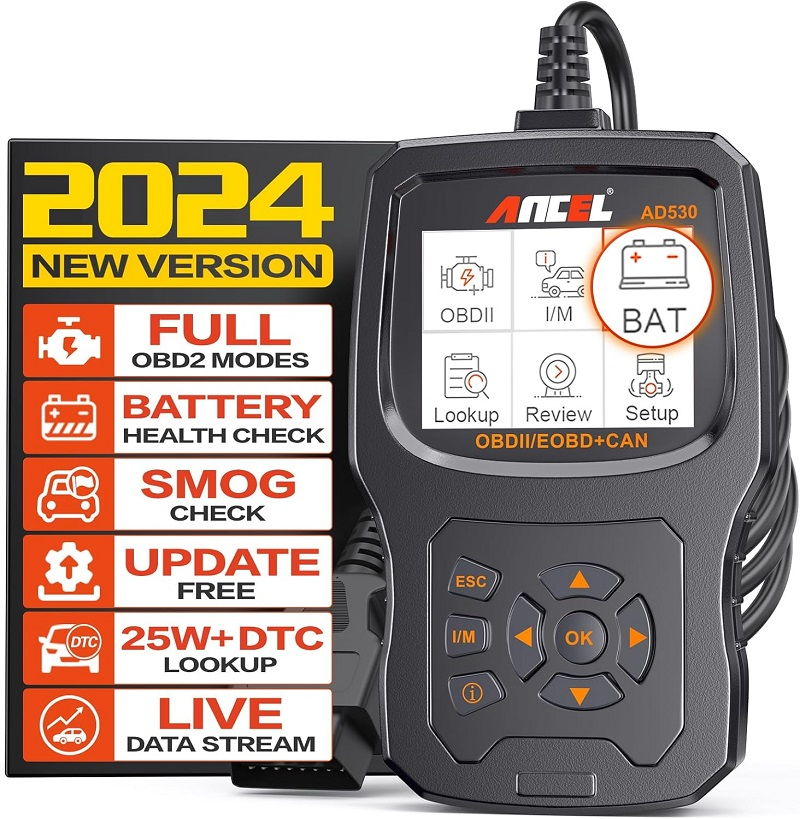This post contains affiliate links. This means I will make a commission at no extra cost to you should you click through and make a purchase [ “As an Amazon Associate, I earn from qualifying purchases.” ]. Read the full disclosure here.
Unveiling the P0072 Trouble Code: Ambient Air Temperature Sensor Circuit Low Input GuideMechanic.Com In the intricate landscape of automotive diagnostics, trouble codes serve as indispensable tools, providing invaluable insights into potential issues within a vehicle’s complex systems.
Among these codes, P0072 commands attention, signifying a concern with the Ambient Air Temperature (AAT) sensor circuit’s low input.
Grasping the significance of this code, its underlying causes, and how to rectify it is pivotal for sustaining optimal vehicle performance and reliability.
See Also: P0070 Code: Ambient Air Temperature Sensor Circuit
P0072 Code: Ambient Air Temperature Sensor Circuit Low Input
The Crucial Role of the Ambient Air Temperature Sensor:

The Ambient Air Temperature (AAT) sensor is a vital component in modern vehicles, furnishing crucial data to the Engine Control Module (ECM) or Powertrain Control Module (PCM).
Positioned within the vehicle’s intake air system or externally, this sensor measures the temperature of the surrounding air. This data is indispensable for various engine functions, encompassing fuel injection timing, air/fuel ratio adjustment, and emissions control.
Decoding the Trouble Code:
The P0072 trouble code specifically denotes an issue with the Ambient Air Temperature sensor circuit’s low input. It indicates that the voltage signal received from the AAT sensor falls below the expected threshold, deviating from the predetermined parameters.
When this code surfaces, it signals to the ECM or PCM that there is a problem with the AAT sensor circuit, potentially impacting engine performance and efficiency.
Common Causes of the P0072 Code:
Several factors may contribute to triggering the P0072 trouble code:
Faulty AAT Sensor:
Over time, the AAT sensor may degrade or malfunction due to exposure to harsh environmental conditions, corrosion, or internal electrical faults.
A defective sensor may generate inaccurate temperature readings or fail to transmit data to the ECM/PCM, prompting the activation of the P0072 code.
Wiring Issues:
Damaged, corroded, or loose wiring connections within the AAT sensor circuit can disrupt the flow of electrical signals. This can result in a low voltage input to the ECM/PCM, leading to erratic temperature readings or intermittent communication between the sensor and the vehicle’s computer system, culminating in the activation of the P0072 trouble code.
Connector Problems:
Faulty connectors or poor connections between the AAT sensor and the vehicle’s wiring harness can impede electrical conductivity. Loose or corroded pins may cause voltage fluctuations or signal interruptions, triggering the P0072 code.
Environmental Factors:
Exposure to extreme temperatures, moisture, road debris, or contaminants can adversely affect the performance and reliability of the AAT sensor. Harsh environmental conditions may accelerate sensor degradation or induce electrical issues, precipitating the activation of the P0072 code.
Troubleshooting and Resolving the P0072 Code:
Addressing the P0072 trouble code necessitates a systematic approach to diagnosis and repair:
Diagnostic Scan:
Commence by conducting a comprehensive diagnostic scan employing a compatible scan tool. Retrieve and document all stored trouble codes, including any freeze frame data associated with the P0072 code.
Visual Inspection:
Undertake a visual inspection of the AAT sensor and its surrounding components. Scrutinize for signs of physical damage, corrosion, or contamination. Examine the wiring harness and connectors for visible damage or loose connections.
Testing AAT Sensor:
Utilize a multimeter to assess the resistance and voltage output of the AAT sensor. Compare the readings to specifications provided by the manufacturer. Replace the sensor if it fails to align with the specified values.
Check Wiring and Connectors:
Inspect the wiring harness and connectors associated with the AAT sensor. Rectify or substitute any damaged wires, corroded terminals, or faulty connectors. Ensure proper routing and secure connections.
Clear Codes and Test Drive:
Upon completing repairs, clear the trouble codes from the ECM/PCM memory utilizing the scan tool. Proceed to test drive the vehicle to validate that the issue has been resolved. Monitor the AAT sensor readings and verify that they fall within the expected range.
Follow-Up Inspection:
Subsequent to driving the vehicle for a reasonable distance, conduct a follow-up inspection to confirm that the P0072 code does not resurface. Continuously monitor the sensor’s performance over time to detect any recurring issues.
Conclusion:
See Also: P0071 Code: Ambient Air Temperature Sensor Range/Performance
In conclusion, the P0072 trouble code associated with the Ambient Air Temperature sensor circuit’s low input signifies a potential malfunction or discrepancy in the vehicle’s AAT sensor system.
Understanding the origins and implications of this code is paramount for diagnosing and remedying the underlying issues effectively.
By adhering to a systematic diagnostic approach and addressing any faulty components or wiring anomalies, drivers and technicians can uphold optimal vehicle performance and reliability.
Regular maintenance and inspection of the AAT sensor system can mitigate the likelihood of future occurrences of the P0072 trouble code, augmenting the overall longevity of the vehicle.


